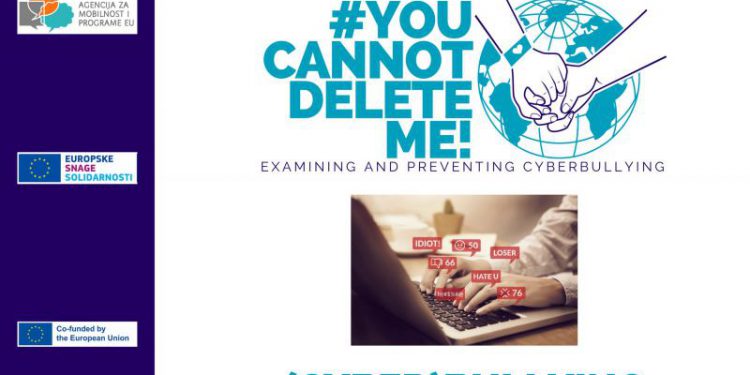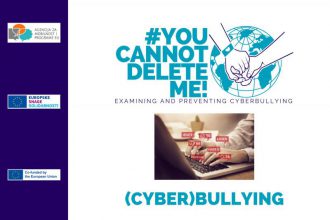(Cyber)bullying | #YouCannotDeleteMe! | Europske snage solidarnosti (HR/EN)

(HR) U posljednjem članku utvrdili smo da se porast cyberbullyinga odnosi na porast digitalnog svijeta, ali što je zapravo zlostavljanje i koje su razlike u odnosu na cyberbullying.
Zlostavljanje je sada prisutno u svakodnevnom životu već generacijama i to je ponavljanje agresivnog ponašanja usmjereno prema nekome tko se čini ranjivijim, događa se licem u lice, a postavke variraju od škole i radnog mjesta do drugih društvenih okruženja poput crkve.
Fizičko nasilje, vrijeđanje, širenje glasina ili društveno isključivanje samo su neki od najčešćih oblika zlostavljanja, a glavni je cilj uvijek isti: nanijeti štetu, zastrašiti ili omalovažiti metu zlostavljača. S drugačijom pozadinom, cyberbullying pruža određenu razinu anonimnosti i udaljenosti koja ima potencijal pojačati štetu po žrtvu.
Za razliku od zlostavljanja, cyberbullying može biti mnogo teže uočiti i ima dugotrajne učinke jer kad nešto ide online, tamo ostaje dugo vremena. Koristeći digitalne alate, ovaj tip zlostavljača muči, prijeti i uznemiruje druge.
To se može dogoditi putem zlonamjernih poruka, uvrjedljivih glasina, širenje fotografija i / ili videa koji su neugodni, predstavljajući se kao netko drugi i čak širenjem kampanja mržnje. Priroda ovog tipa zlostavljanja omogućava mu da brzo dosegne veliku publiku, što pojačava emocionalnu i psihološku patnju onih koji pate.
U sljedećem ćemo članku usredotočiti na ključne razlike između zlostavljanja i cyberbullyinga.
Nastavite pratiti #YouCannotDeleteMe”!
(EN) In the last article, we established that the rise of cyberbullying relates to the rise of the digital world, but what really is bullying and what are the differences to cyberbullying.
Bullying has been now present in daily life for generations and it is the repetition of aggressive behaviour directed towards someone that seems more vulnerable, occurring face to face and the settings vary from school and workplace or even other social settings like church.
Physical violence, name calling, spreading rumours or social exclusion are just some of the most common acts of bullying and the main goal is always the same: to harm, intimidate or demean the target of the bully.
With a different landscape, cyberbullying provides a certain level of anonymity and distance which has the potential to intensify the harm to the victim. Unlike bullying, cyberbullying can be much more difficult to spot and has long time effects, because when something is online it stays there for a long time.
While using digital tools, this type of bullies torment, threaten and harass others. This can happen through malicious messages, hurtful rumours, the circulation of photos and/or videos that are embarrassing, impersonating someone else and even the dissemination of hate campaigns. The nature of this type of bullying makes it possible to reach a vast audience very fast, what amplifies the emotional and psychological distress on those who are suffering.
In the next article, we are going to focus on the key differences between bullying and cyberbullying.
Keep following #YouCannotDeleteMe”!


